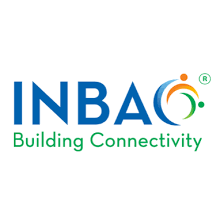


Implementing digital and smart infrastructure in homes offers numerous advantages, enhancing convenience, safety, energy efficiency, and overall quality of life for residents. Here are some key reasons why incorporating digital and smart infrastructure is beneficial for homes:
INCREASED CONVENIENCE AND COMFORT
Automated Control:
Smart home systems allow for automation of everyday tasks, such as adjusting lighting, controlling the thermostat, and managing appliances. This can be done through centralized platforms, smartphones, or voice commands, providing a high level of convenience for residents.
Personalized Settings:
Residents can create personalized settings for different times of the day or specific activities, such as waking up, cooking, or entertaining. This customization enhances comfort and meets the unique needs of each household member.
ENHANCED ENERGY EFFICIENCY AND COST SAVINGS
Smart Energy Management:
Digital infrastructure enables better management of energy usage through smart thermostats, lighting systems, and appliances. These devices can optimize energy consumption based on real-time data, reducing utility bills and environmental impact.
Energy Monitoring:
Homeowners can monitor energy usage in real-time, identify energy-intensive devices, and adjust their behavior to minimize waste, contributing to cost savings and sustainability.
IMPROVED SECURITY AND SAFETY
Advanced Security Features: Smart homes can include integrated security systems with features like smart locks, video surveillance, motion detectors, and alarm systems. These systems provide real-time alerts and remote access, enhancing home security.
Emergency Detection: Smart smoke detectors, carbon monoxide alarms, and water leak sensors provide early detection and alerts, enabling quick responses to potential emergencies and preventing property damage.
HEALTH AND WELL-BEING
Indoor Air Quality Monitoring: Smart home systems can monitor air quality and control ventilation to ensure a healthy indoor environment. This is particularly beneficial for homes with children, elderly residents, or individuals with respiratory conditions.
Circadian Lighting: Smart lighting systems can adjust the intensity and color temperature of lights to mimic natural daylight patterns, promoting better sleep and overall well-being.
INCREASED PROPERTY VALUE AND MARKET APPEAL
Market Differentiation: Homes with integrated digital and smart infrastructure are often more attractive to potential buyers or renters who value technology, convenience, and sustainability. This can increase the market value of the property.
Future-Proofing: Investing in smart infrastructure makes a home more adaptable to future technological advancements, ensuring it remains modern and relevant for years to come.
REMOTE ACCESS AND CONTROL
Remote Monitoring: Smart home systems allow homeowners to monitor and control their home from anywhere in the world. This is particularly useful for checking security, managing energy usage, or ensuring the home is ready for their arrival.
Convenience for Travelers and Remote Workers: Homeowners can manage their homes while away, ensuring their property remains secure and energy-efficient.
SIMFLIFIED MAINTENANCE ANND MANAGEMENT
Predictive Maintenance: Smart systems can monitor the performance of household appliances and systems, alerting homeowners to potential issues before they become major problems. This proactive approach reduces repair costs and extends the lifespan of home systems and appliances.
Automated Scheduling: Smart home infrastructure can schedule routine tasks like watering the garden, running the vacuum cleaner, or even restocking the fridge, reducing the time and effort needed for home management.
INEGRATION WITH SMART ECOSYSTEMS
Interoperability: Modern smart home systems are designed to work seamlessly with other devices and platforms, creating an integrated ecosystem that can enhance overall functionality. This includes smart assistants like Amazon Alexa, Google Assistant, and Apple HomeKit, which can unify control over various smart home devices.
Smart Lighting: Dynamic lighting systems that adjust according to natural light
availability and circadian rhythms can improve occupants' well-being and
productivity.
SUSTAINABILITY AND ECO-FRIENDLINESS
Green Living: Digital infrastructure supports sustainable living by enabling homeowners to monitor and reduce their carbon footprint, promote renewable energy use, and minimize waste.
Smart Water Management: Automated irrigation systems and leak detectors can help manage water use more efficiently, conserving a valuable resource and reducing costs.
AGING IN PLACE
Support for Elderly Residents: Smart home technology can assist elderly residents in maintaining their independence by providing features such as fall detection, automated reminders, and easy-to-use interfaces for controlling home systems.
Health Monitoring: Integration with health monitoring devices can provide real-time health data, which can be crucial for managing chronic conditions or providing emergency alerts.
Digital and smart infrastructure in homes provides numerous benefits that enhance convenience, security, energy efficiency, and overall quality of life. With advancements in technology and growing consumer interest, smart homes are becoming an increasingly appealing option for homeowners and investors, promoting a more connected, efficient, and sustainable lifestyle.